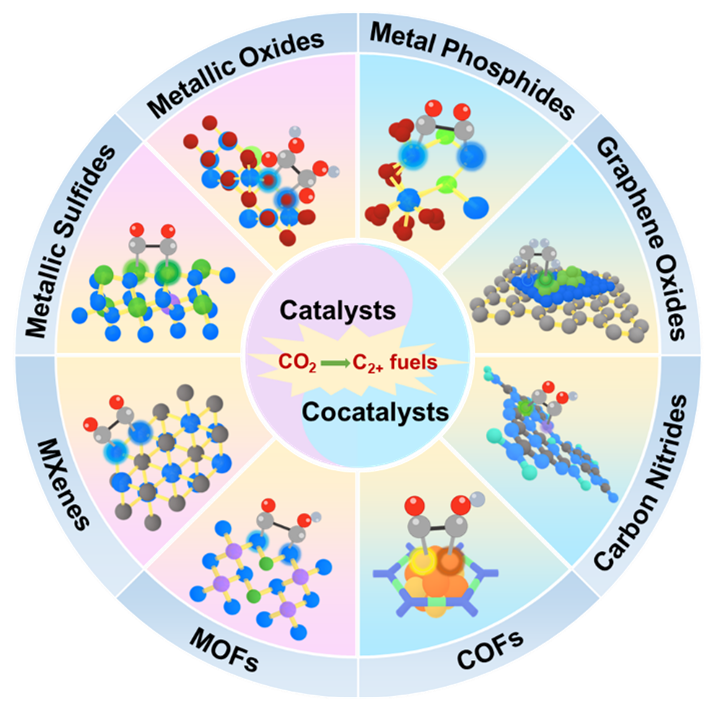《Chem. Soc. Rev.》: Recent Progress for Solar-driven CO2 Reduction into Multicarbon Products
Mengqian Li,+ Zequn Han,+ Qinyuan Hu,+ Wenya Fan, Qing Hu, Dongpo He, Qingxia Chen*, Xingchen Jiao*, and Yi Xie*
Currently, most catalysts used for photoconverting carbon dioxide (CO2) typically produce C1 products. Achieving multicarbon (C2+) products, which are highly desirable due to their greater energy density and economic potential, still remains a significant challenge. This difficulty is primarily due to the kinetic hurdles associated with the C–C coupling step in the process. Given this, devising diverse strategies to accelerate C−C coupling for generating multicarbon products is requisite. Herein, we first give a classification of catalysts involved in the photoconversion of CO2 into C2+ fuels. We summarize the metallic oxides, metallic sulfides, MXenes, metal-organic frameworks as catalysts for CO2 photoreduction into C2+ products, attributing their efficacy to the inherent dual active sites facilitating C−C coupling. In addition, we survey covalent organic frameworks, carbon nitride, metal phosphide, and graphene as cocatalysts for CO2 photoreduction into C2+ products, owing to the incorporated dual active sites that induce C−C coupling. In the end, we provide a brief conclusion and an outlook on designing new photocatalysts, understanding the catalytic mechanisms, and considering the practical application requirements for photoconverting CO2 into multicarbon products.

Figure 1. CO2 photoreduction towards C2+ products over various materials, in which metallic oxides, metallic sulfides, MXenes, MOFs act as catalysts while COFs, C3N4, metal phosphide, and graphene serve as cocatalysts for boosted C−C coupling.
